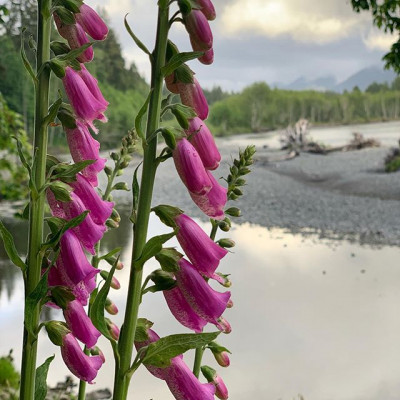Summary
The Elwha River is located on the Olympic Peninsula in Washington state. It runs primarily south-north, with its northern waters debouching into the Strait of Juan de Fuca. Its headwaters are located primarily within Olympic National Park. In 1911, the Elwha dam was constructed at river mile 4.9, with the Glines Canyon dam following later on in 1927. Both dams supplied energy to Port Angeles and helped operate a nearby paper mill. With the construction of the two dams, two reservoirs were created; Lake Mills and Lake Aldwell. These lakes as well as the upper Elwha river were renowned for their trout fishing with bountiful large Rainbow trout, eager to take a fly. But, due to the lack of fish passage on either dam, all anadromous species that historically inhabited the river were no longer able to reach their natal spawning grounds for almost 100 years.
In 2011, the dam removal process began and by 2014 the river flowed freely again. In the years since, much work has been done by multiple entities and organizations to restore the watershed, including the reforestation of floodplains and riparian areas, removal of debris and sediment, and extensive monitoring of smolt activity, particularly in nearshore areas east and west of the mouth of the Elwha. Since the removal began and until at least July 1, 2021, the river has been closed to all forms of fishing (commercial and sport). That paired with a lack of accessibility to the upper stretches of the river due to road washouts has eliminated the ability of most to interfere with the natural restoration process. There is little road access and only some trail access in the upper reaches of the river within the national park, which helps ensure habitat is not further compromised by human activity.
Basin Stats
Location: Olympic Peninsula, out of Port Angeles, WA.
Major Contributing Streams: Indian Creek, Little River, Hughes Creek, Griff Creek, Boulder Creek, Wolf Creek, Cat Creek, Long Creek, Lillian River, Lost River, Goldie River, Hayes River, Godkin Creek, Buckinghorse Creek, Delabarre Creek
River Length: 45 miles
Drainage area: 321 square miles
Main Tributary Length: Indian Creek (7.5 miles)
Secondary Tributary Length: Little River (7.8 miles)
Threats:
Hatchery stock is being utilized to re-populate some of the present species; winter steelhead, spring, summer, and fall Chinook salmon, Coho salmon, and Chum salmon. The lower Elwha Klallam tribe has been using existing Elwha broodstock collected prior to dam removal to bolster the native fish population. Sediment flow from the dam removal, particularly in the earlier stages as the 18 million cubic yards of sediment began to wash downstream, created a toxic environment that would have adversely affected any present smolt as well as adult fish. It was expected that most or all fish rearing naturally below the lakes would die during dam removal, as turbidity exceeded 10,000ppm on more than one occasion. Turbidity of 1,000ppm results in direct mortality of fish. The tribe’s workaround was to ensure sufficient genetic material and broodstock would be available to boost native populations once these conditions passed. Now that removal has been completed, the lower Elwha Klallam tribe has begun the temporary supplementation of the above species in the basin. An interesting piece of the broodstock program is discussed by John McMillan in his article for Trout Unlimited, “Summer steelhead in the Elwha rise from the ashes”. His research (among others) shows that the Elwha population of summer steelhead is improving rapidly. Sections of the upper river surveyed over 70 adult summer runs as a conservative estimate. This particular group of steelhead was not bolstered by hatchery assistance, which insinuates that other wild fish may have survived the dam removal without the assistance of a broodstock program as well.
Currently habitat is in flux as restoration efforts continue. Many many hours have been put into restoring riparian areas and floodplains, streams, spawning grounds, and gravel bars. As stream channels restabilize post-removal, these efforts are paying off and smolt counts done by the Coastal Watershed Institute have been promising. Once the river re-opens to any type of fishing again, it is likely that hiking, fishing, and other water usage by humans will result in some forms of habitat damage.
Hydropower: There may still be culverts present in certain road stretches leading into tributaries, but the largest and most obvious fish passage barriers have finally been eliminated.
As long as the river remains closed, there are currently no threats from overharvest of any species. This is likely to change once the river re-opens to sport and commercial fishing. Some poaching is present and local law enforcement does penalize offenders, but often they are not apprehended in a timely manner (if ever).
News and media within the basin:
Videos
From FOXQ13 - "Elwha Dam Removals: A river restored?"
Videos from the Coastal Watershed Institute on Vimeo
News articles
From the New Yorker: New Life Along Washington's Elwha River
From National Geographic "After Largest Dam Removal In History, This River is Thriving"
From TU: "Summer Steelhead in the Elwha Rise from the Ashes"







